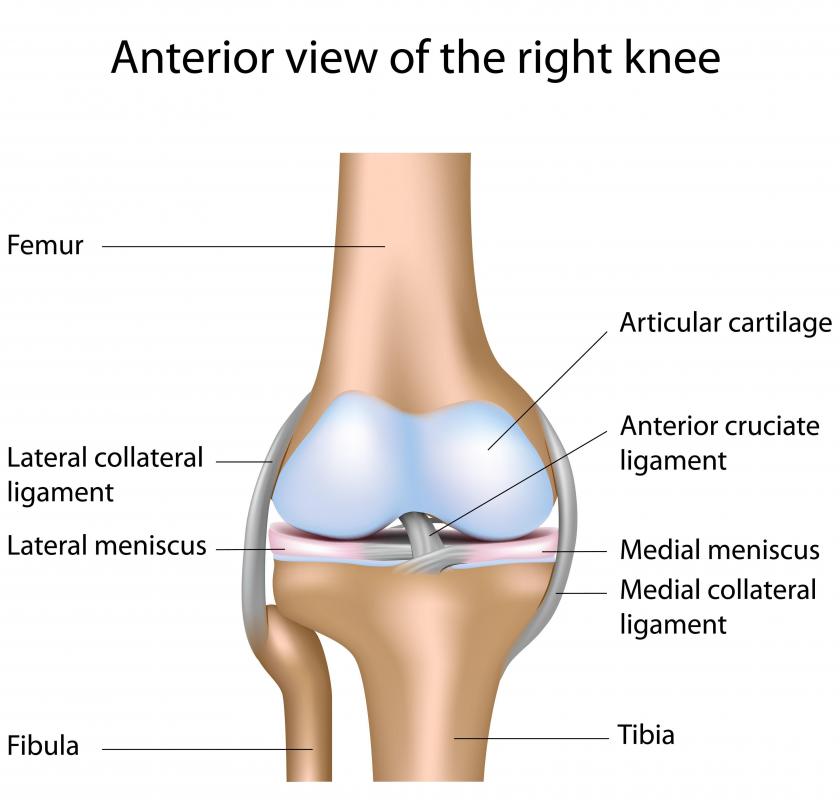At WiseGEEK, we're committed to delivering accurate, trustworthy information. Our expert-authored content is rigorously fact-checked and sourced from credible authorities. Discover how we uphold the highest standards in providing you with reliable knowledge.
What is Minimally Invasive Knee Surgery?
Individuals in need of knee repair or replacement have benefited from advancements in surgical techniques, tools and technologies. Prior to these advances, surgeons made large incisions and performed what was called full open knee surgery. In most developed countries, orthopaedic surgeons now perform what is called minimally invasive knee surgery. This type of surgery is also referred to as arthroscopic surgery, which loosely means "viewing of joints." Minimally invasive knee surgery requires a smaller incision, usually involves a shorter recovery period, and has a statistically lower risk and higher success rate compared to full open knee surgery.
Minimally invasive knee surgery, or arthroscopic surgery, involves the use of a small camera or microscopic video device. This device uses fiber optic cabling and is inserted into one or two small incisions on the front of the knee. A full open knee surgical procedure would typically involve a large incision running the full length of the knee along the inside of the leg. Incisions for arthroscopic surgery, however, are about the size of a pencil eraser. In many cases, the scarring from minimally invasive knee surgery fades over time and is unnoticeable to the naked eye.

The surgeon uses the scope to take video and pictures of the inside of the patient’s knee. If a problem area is discovered, the surgeon can make another small incision and use similar-sized tools to repair damaged tissue, cartilage, meniscus, or ligaments. Instead of opening up the entire area, the surgeon simply uses a monitor and performs the surgery using microscopic tools.

One reason that arthroscopic surgery is called minimally invasive knee surgery is that, in addition to using very small incisions, it generally requires fewer surgical tools and is a shorter surgical procedure. All of these factors add up to less trauma on the knee and a shorter recovery period. In the average scenario, a patient can be fully-recovered and return to everyday physical activities within six to eight weeks, depending on his or her age and overall health.

Some surgeons advocate performing partial knee replacements using minimally invasive knee surgery. There is ongoing debate over the effectiveness of this type of surgery compared to other methods. Some professionals suggest that in the right situation, patients in need of partial knee replacements can benefit greatly from arthroscopic surgery compared to traditional, full open knee surgery while others believe that large-scale replacements still require full open knee surgery.
AS FEATURED ON:
AS FEATURED ON:














Discuss this Article
Post your comments